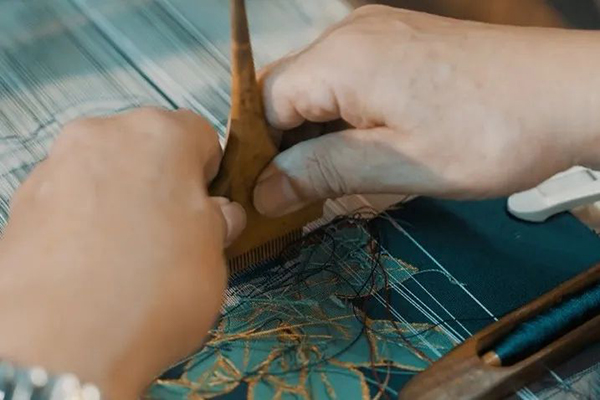

Nantong kesi, a branch of Ben kesi, a type of Chinese tapestry weaving, dates back to the Northern Song Dynasty (960-1127).
The silk threads used in Nantong kesi are relatively thick, resulting in a distinctive spiral pattern on the fabric's surface.
Crafting a piece of Nantong kesi work involves many intricate steps that require the weaver to sketch the design, add colors to the sketch, match the threads, annotate the techniques, prepare the shuttle with the threads, weave the warp, and trim the threads. By harmonizing their hands, feet, eyes, and mind, weavers employ various kesi techniques to create their works.
Nantong kesi has experienced numerous setbacks throughout history. The rise of Ming kesi, another kesi technique, during the Ming Dynasty (1368-1644) gradually overshadowed the Nantong kesi. In the early 20th century, Zhang Jian, a prominent figure in Nantong, established a women's vocational school and invited several skilled artisans to revive Nantong kesi. However, the industry was devastated during wartime, leading to the loss of kesi craftsmanship once again.